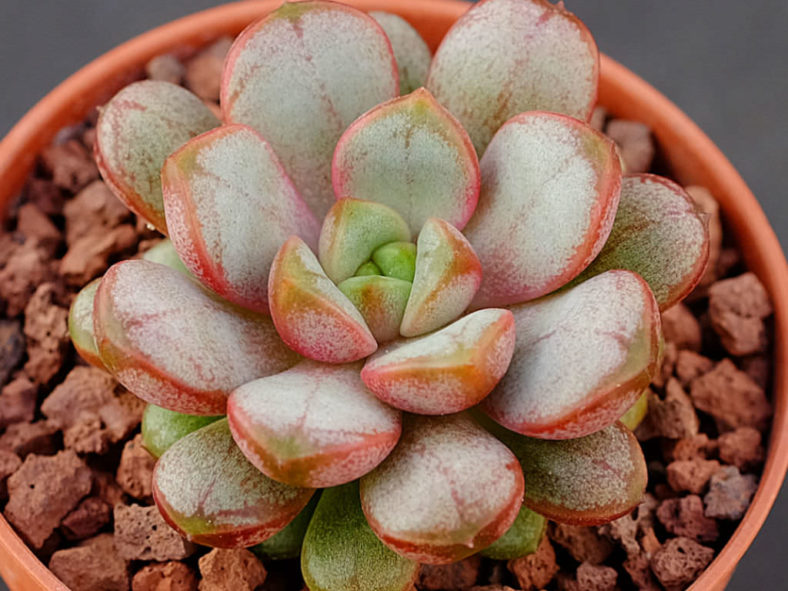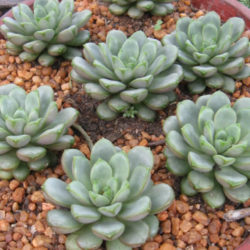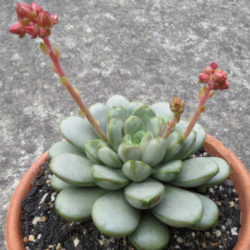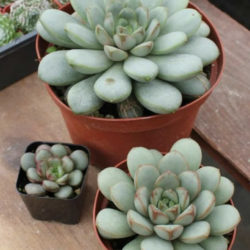Scientific Name
×Graptoveria 'Amethorum'
Scientific Classification
Family: Crassulaceae
Subfamily: Sempervivoideae
Tribe: Sedeae
Nothogenus: ×Graptoveria
Description
×Graptoveria 'Amethorum' is a strangely attractive succulent that forms compact rosettes of greyish-green leaves with lighter margins. The leaves are thick, fleshy, keeled, with a faint line running down the center. When exposed to bright sunlight, the edges of the leaves can blush pink to red. The rosettes can grow up to 3 inches (7.5 cm) in diameter.
The flowers are bell-shaped, reddish-orange, and appear on erect, branched stalks in late spring and early summer.
Origin
×Graptoveria 'Amethorum' is a rare hybrid created by Charles Uhl, resulting from the cross between Graptopetalum amethystinum and Echeveria purpusorum.

Hardiness
USDA hardiness zone 9a to 11b: from 20 °F (−6.7 °C) to 50 °F (+10 °C).
How to Grow and Care
The rules for Graptopetalums care are similar to those for most succulents. Container-bound plants thrive in a mixture of peat, sand, or other grit, topsoil, and a little bit of compost. Full sun is the best situation, but they will grow in partial sun with slightly rangy results.
Graptopetalums need excellent drainage and moderate water. You can tell when to water by sticking your finger in the soil. You should water if it is dry several inches down or the fleshy leaves look shriveled. Overwatering is a cause of root rots, and the plant can get several pest infestations.
The Graptopetalums are generally easily propagated by seeds, leaf cuttings, or offsets. Any rosette that breaks off has the potential to root and start a new plant. Even a leaf that drops off will quickly root below the parent plant and produce a new rosette. The new plant feeds off the leaf until it shrivels and falls off. The new little ghost plant had rooted and sprouted new leaves by then.
See more at How to Grow and Care for Graptopetalum.
Links
- Back to nothogenus ×Graptoveria
- Succupedia: Browse succulents by Scientific Name, Common Name, Genus, Family, USDA Hardiness Zone, Origin, or cacti by Genus
Photo Gallery
Click on a photo to see a larger version.


